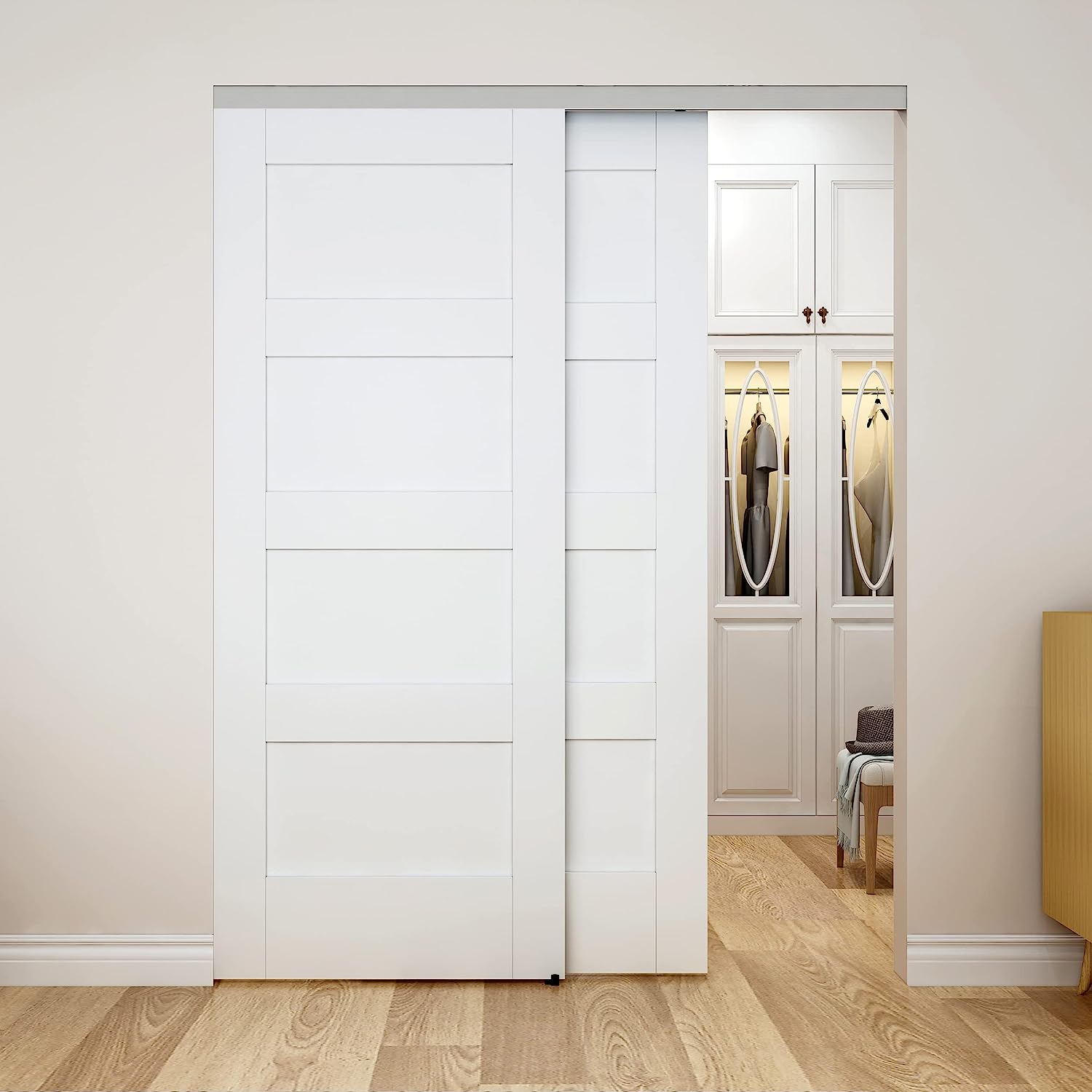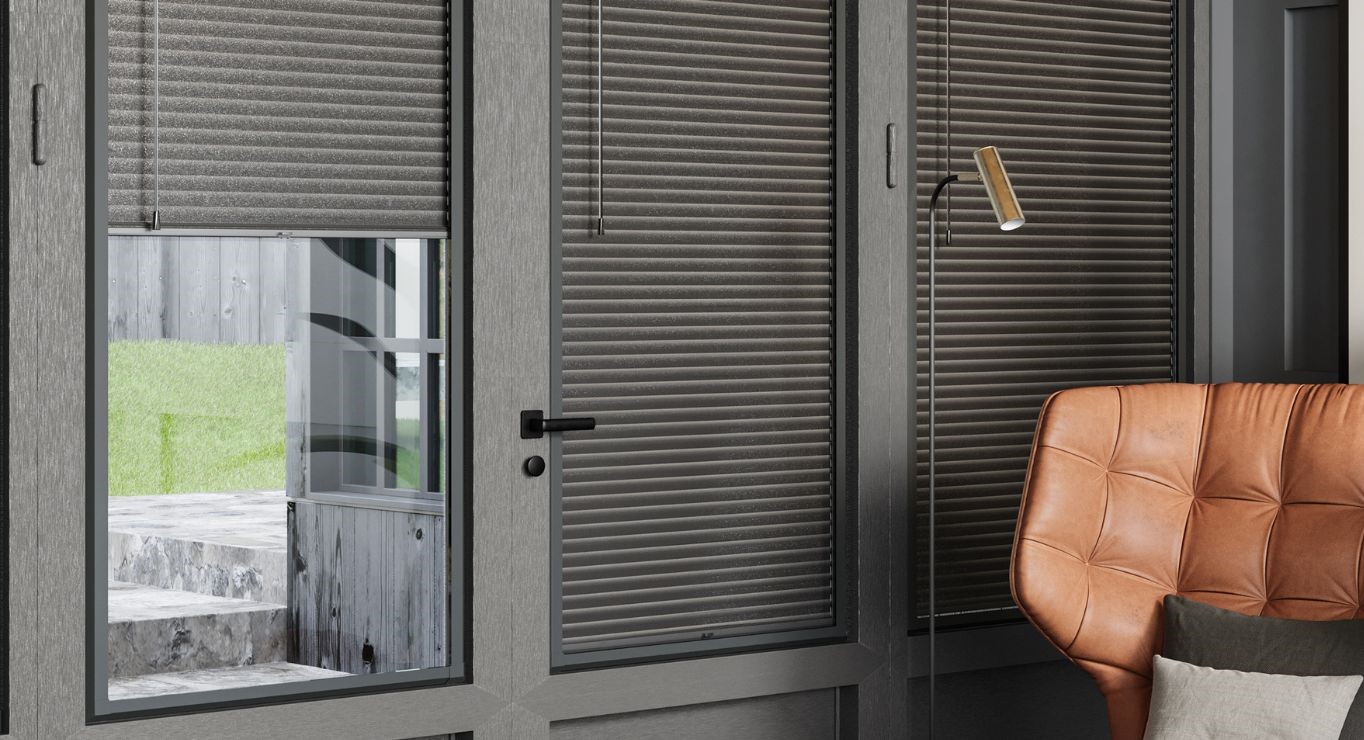

Articles
How To Measure For Closet Doors
Modified: August 28, 2024
Learn how to measure for closet doors in this comprehensive guide. Ensure proper home maintenance with accurate measurements for your closets.
(Many of the links in this article redirect to a specific reviewed product. Your purchase of these products through affiliate links helps to generate commission for Storables.com, at no extra cost. Learn more)
Introduction
Welcome to our guide on how to measure for closet doors. If you’re looking to update your closet doors or install new ones, it’s important to take accurate measurements to ensure a proper fit. Whether you are replacing existing doors or installing them for the first time, this step-by-step guide will help you navigate through the process. By following these instructions, you’ll be well on your way to achieving a functional and aesthetically pleasing closet door solution.
Properly measuring for closet doors is crucial to avoid any fitting issues or gaps that can compromise the functionality and appearance of the doors. Taking accurate measurements will enable you to find the right door size and style that suits your needs while ensuring a smooth and hassle-free installation.
In this guide, we will walk you through the process of measuring for closet doors, determining the appropriate door style, considering different door materials, and selecting the necessary door hardware. By the end of this guide, you will have all the information you need to confidently choose and install the perfect closet doors for your space.
Key Takeaways:
- Properly measuring for closet doors is crucial to avoid fitting issues and ensure a smooth installation. Consider door style, material, and hardware to achieve the perfect fit for your space.
- Accurate measurements, thoughtful selection of door style and material, and choosing the right hardware are essential for achieving functional and aesthetically pleasing closet doors.
Read more: How To Frame A Closet Door
Step 1: Taking Accurate Measurements
The first step in measuring for closet doors is to accurately measure the dimensions of the door opening. To ensure a proper fit, it’s essential to measure both the height and width of the opening. Here’s how to get accurate measurements:
- Measure the height: Start by measuring the height of the door opening. Use a tape measure to measure from the floor to the top of the opening. Make sure to take measurements from three different points – the left side, the center, and the right side. Use the shortest measurement as the height of the door.
- Measure the width: Next, measure the width of the door opening. Use a tape measure to measure from one side of the opening to the other. Again, take measurements from three different points – the top, middle, and bottom of the opening. Use the narrowest measurement as the width of the door.
- Check for any obstructions: Take note of any obstructions that may affect the installation of the closet doors. These can include baseboards, door frames, or any protruding objects. Measure the distance from the edge of the opening to the obstruction and factor it into your measurements.
When measuring, it’s important to be precise and use a reliable tape measure. Measure to the nearest 1/8 inch or millimeter to ensure accurate sizing. Take multiple measurements to double-check your figures and ensure consistency.
It’s also worth noting that closet doors usually come in standard sizes. If your measurements fall within these standard sizes, it will be easier to find pre-made doors that fit your opening. However, if your measurements are outside the standard sizes, you may need to consider custom-made doors.
Once you have measured the height and width of the opening and accounted for any obstructions, you can confidently proceed to the next step of choosing the right door style for your closet.
Step 2: Determining Door Style
Choosing the right door style for your closet is an important decision that can greatly impact the overall look and functionality of your space. Closet doors come in various styles, each offering unique features and benefits. Here are some popular options to consider:
- Sliding Doors: Sliding doors are a common choice for closets, especially when space is limited. They slide horizontally on tracks and are ideal for wide openings. Sliding doors can be either single-panel or multi-panel, allowing easy access to one side or both sides of the closet.
- Bifold Doors: Bifold doors consist of two panels that fold in the center and slide on a track. They are a great option for closets with smaller openings and provide convenient access to the entire closet when fully opened. Bifold doors are available in various materials, such as wood, glass, or mirrored surfaces.
- Hinged Doors: Hinged doors, also known as swing doors, function similarly to traditional room doors. They swing open on hinges attached to the door frame. Hinged doors are a classic choice and offer a wide range of design options. They work well for larger closets with ample floor space.
- Pocket Doors: Pocket doors are a space-saving option where the door slides into a pocket within the wall when opened. This style is ideal for closets located in tight or narrow spaces. Pocket doors can provide a sleek look and reduce visual clutter when closed.
- Curtains or Drapes: For a more casual or unconventional option, curtains or drapes can be used instead of traditional doors. This is a flexible and budget-friendly choice that allows you to easily customize the look of your closet.
When determining the door style, consider factors such as the available space, your personal preference, and the overall aesthetics of the room. Think about how you want the doors to function and how they will complement the existing decor. Additionally, take into account the practicality and maintenance requirements of each door style.
Once you have determined the most suitable door style for your closet, you can move on to the next step of considering the different door materials available.
When measuring for closet doors, be sure to measure the height and width of the door opening at multiple points to account for any unevenness. Take the largest measurements for accuracy.
Step 3: Considering Door Material
When it comes to selecting the right material for your closet doors, it’s important to consider both the aesthetic appeal and the durability of the material. The material you choose will impact the overall look of your closet and its longevity. Here are some popular options to consider:
- Wood: Wood is a classic choice for closet doors due to its timeless beauty and durability. Solid wood doors offer a natural and warm look, adding character to any space. They can be stained or painted to match your desired style. However, keep in mind that solid wood doors may be more expensive and require regular maintenance to prevent warping or splitting.
- Glass: Glass doors provide a sleek and modern look to your closet. They can be transparent or frosted to offer varying levels of privacy. Glass doors allow natural light to pass through, making your closet appear brighter and more spacious. However, it’s important to handle glass doors with care as they can be fragile and require regular cleaning to maintain their clarity.
- Mirrored: Mirrored doors are a popular choice for closets as they serve a dual purpose – functioning as both a door and a mirror. They create an illusion of a larger space and reflect light, making the room appear brighter. Mirrored doors are available in different styles, from full-length mirrors to mirrored panels combined with other materials.
- Laminate: Laminate doors offer a wide range of design options as they can mimic the look of different materials such as wood, metal, or even fabric. They are durable, easy to clean, and more affordable compared to solid wood doors.
- Composite: Composite doors are made from a combination of materials, typically wood fibers and resins. They offer the look of solid wood doors but are more affordable and less prone to warping. Composite doors are a good choice for those looking for a cost-effective option without compromising on aesthetics.
Consider factors such as your personal style, the overall decor of the room, and the level of maintenance you’re willing to undertake when selecting the door material. It’s also important to ensure that the chosen material is suitable for the specific climate conditions in your area.
After deciding on the door material, you can proceed to the next step of selecting the necessary door hardware for your closet.
Step 4: Selecting Door Hardware
Selecting the right door hardware is essential to ensure proper functionality and enhance the overall aesthetics of your closet doors. There are various hardware options available, each serving a specific purpose. Here are some key factors to consider when choosing door hardware:
- Hinges: If you opt for hinged doors, you’ll need to select the appropriate hinges. Choose high-quality hinges that can support the weight and size of your doors. Consider the finish of the hinges to match the overall style of your closet.
- Handles: Handles or knobs are essential for easy opening and closing of doors. They come in various shapes, sizes, and finishes. Consider the overall design theme of your closet and choose handles that complement the style. Additionally, ensure that the handles are comfortable to grip and use.
- Tracks: For sliding or bifold doors, you’ll need to select the right tracks to ensure smooth operation. Ensure that the tracks are of high quality and can support the weight of the doors. Proper installation of tracks is crucial for the doors to function properly.
- Guides: Guides are important for keeping sliding or bifold doors aligned and preventing them from swaying or coming off the tracks. Choose guides that are durable and provide reliable support for the doors.
- Locks and latches: Depending on the level of privacy and security you desire, you may consider adding locks or latches to your closet doors. Select appropriate locks or latches that are both functional and aesthetically pleasing.
When choosing door hardware, it’s important to ensure that the style, finish, and quality of the hardware complement the overall design and materials of your closet doors. Consider factors such as durability, ease of use, and maintenance requirements when making your selections.
Ensure that you follow the manufacturer’s instructions for installing the chosen hardware properly. Proper installation will ensure that your closet doors function smoothly and securely.
With the hardware selected and installation instructions in hand, you are now ready to move forward with ordering or installing your closet doors. By following these steps – taking accurate measurements, determining door style, considering door material, and selecting door hardware – you’ll be well on your way to achieving the perfect closet doors that enhance both the functionality and aesthetics of your space.
Read more: How To Decorate Closet Doors
Conclusion
Congratulations! You’ve reached the end of our guide on how to measure for closet doors. By following the steps outlined in this guide, you can ensure a successful and hassle-free installation of your new closet doors. Let’s recap what we’ve covered:
First, we discussed the importance of taking accurate measurements of your closet door opening. By measuring the height and width of the opening and accounting for any obstructions, you can ensure a proper fit for your doors.
Next, we explored different door styles, including sliding doors, bifold doors, hinged doors, pocket doors, and curtains or drapes. Consider the available space, personal preference, and the overall aesthetics of your room when choosing the most suitable door style.
Then, we delved into door materials and the factors to consider when making your selection. From the classic beauty of wood to the sleekness of glass or the functionality of mirrored doors, there is a wide range of materials to choose from. Evaluate the durability, maintenance requirements, and the overall look you want to achieve to find the perfect fit for your closet.
Lastly, we explored the importance of selecting the right door hardware to ensure proper functionality and enhance the overall appearance of your closet doors. Hinges, handles, tracks, guides, locks, and latches all play a vital role in the smooth operation and security of your closet doors.
Remember, taking accurate measurements, choosing the right door style and material, and selecting appropriate door hardware are crucial steps in achieving the perfect closet doors that meet both your practical needs and aesthetic preferences.
We hope this guide has provided you with valuable insights and guidance to confidently measure for and select the ideal closet doors for your space. With the right doors in place, you can elevate the functionality and visual appeal of your closets. Best of luck with your project, and enjoy the transformation of your space!
Now that you've mastered measuring for closet doors, why not take your skills a step further? Perfecting closet design can transform storage spaces into stylish, efficient areas. Interested in broader home improvements? Tackling DIY home projects allows for personal touches that truly make a house a home. Dive into these exciting articles next, and keep enhancing your living space!
Frequently Asked Questions about How To Measure For Closet Doors
Was this page helpful?
At Storables.com, we guarantee accurate and reliable information. Our content, validated by Expert Board Contributors, is crafted following stringent Editorial Policies. We're committed to providing you with well-researched, expert-backed insights for all your informational needs.















0 thoughts on “How To Measure For Closet Doors”